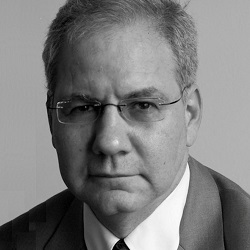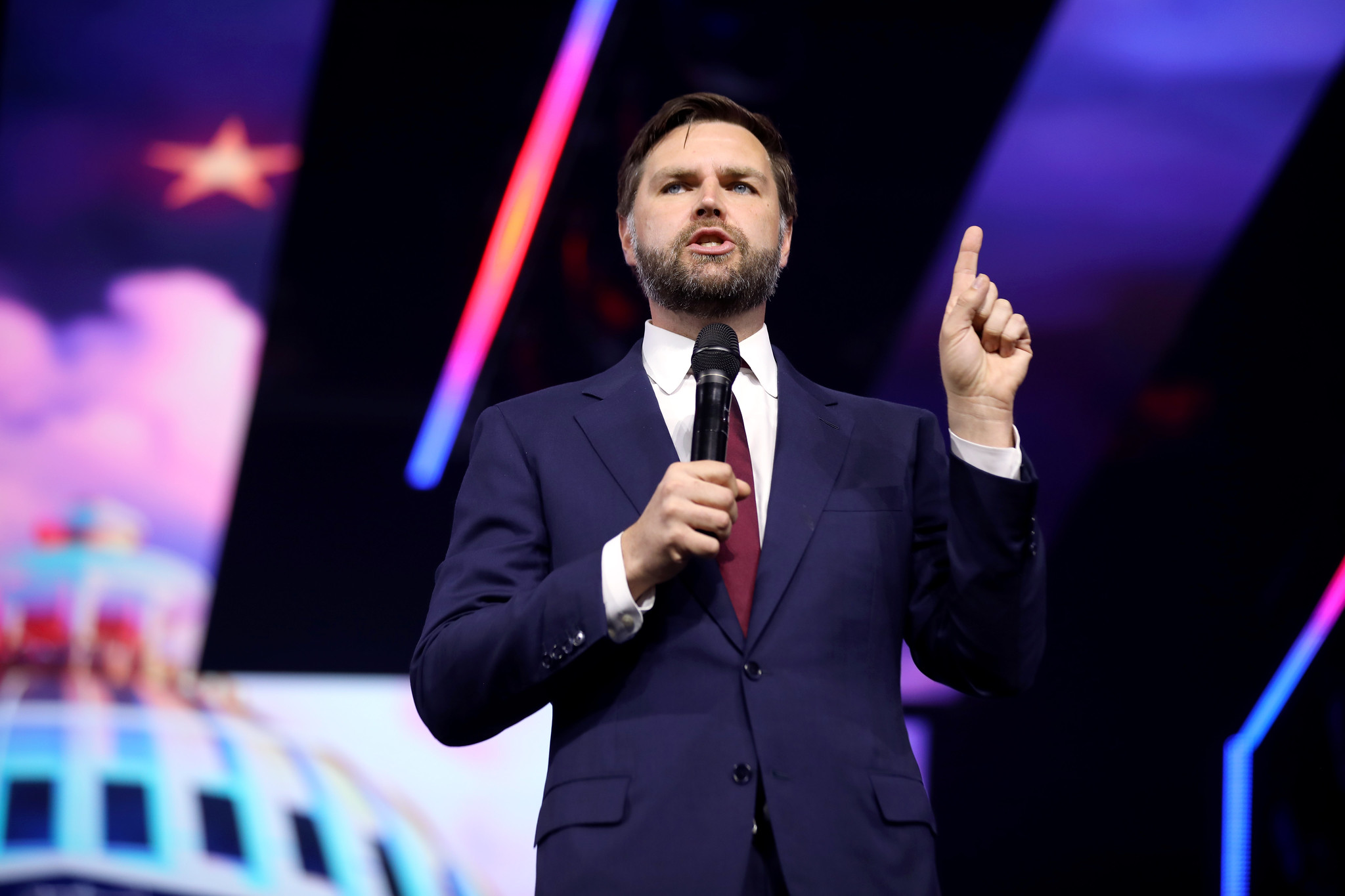A Tale of Two Narratives
A review of Greg Miller, “The Apprentice: Trump, Russia and the Subversion of American Democracy” (HarperCollins Publishers, 2018)
***
Two narratives about Russian interference in the 2016 election are in direct competition with one another.
Published by The Lawfare Institute
in Cooperation With

A review of Greg Miller, “The Apprentice: Trump, Russia and the Subversion of American Democracy” (HarperCollins Publishers, 2018)
***
Two narratives about Russian interference in the 2016 election are in direct competition with one another.
The first is the standard narrative, according to which Russia interfered in the 2016 election with the goal of damaging our democratic processes and discrediting the likely next president, Hillary Clinton. At some point along the way, as the campaign progressed and their meddling seemed to be having outsized effects, the Russian effort to discredit Clinton metamorphosed into an effort to help elect Donald Trump. Trump and his campaign may have colluded with this Kremlin effort, and Trump’s peculiar relationship with Russian leader Vladimir Putin may be tied to the supposed collusion. A major focus of the investigation led by the special counsel Robert Mueller is to determine whether such collusion occurred.
The alternative narrative has been elaborated by President Trump himself. It consists of the defensive assertion, endlessly repeated by Trump in utterances and on Twitter, that nothing untoward happened and that the Mueller investigation is fraudulent. “NO COLLUSION – RIGGED WITCH HUNT” is how Trump put it in a typical all-caps, late-night tweet. Trump also sometimes goes on offense, offering the counter-claim that there was collusion aplenty, only it was, in his words, “between Hillary, the Democrats and Russia."
The twin set of propositions adumbrated by Trump does not take us very far. But it has been given considerable flesh and bones by a coterie of pro-Trump congressmen, journalists, and think tank residents. Although details vary from player to player, in the main, the pro-Trump narrative flips the standard version on its head.
In this telling, an important landmark is Donald Trump’s March 2017 tweet that Barack Obama had ordered him surveilled: “Terrible! Just found out that Obama had my ‘wires tapped’ in Trump Tower just before the victory. Nothing found. This is McCarthyism!”
This tweet, the argument goes, needs to be taken not literally, but seriously. What Trump really meant to say was that in the course of the 2016 presidential campaign, Barack Obama and officials loyal to him in the higher echelons of the national-security and intelligence apparatus unleashed the investigative powers of the U.S. government on the Trump campaign in an attempt to stop it. When their effort failed, they turned those same powers onto the Trump transition team, to cripple the fledgling administration before it got off the ground.
The “dodgy dossier,” as Trump’s allies have dubbed it, was a critical part of the plan. Compiled by the former British spy Christopher Steele, and paid for by the Clinton campaign, this document consisted of a farrago of unverified claims ginned up by Russian sources, who were possibly under the control of Russian intelligence, and who were out to muddy the waters of American politics. In the words of one Wall Street Journal op-ed, it is most likely that the dossier was “part of a Russian espionage disinformation plot,” seeding damaging false information about Trump into the American political process. That false information then flowed into our judicial machinery when it was employed to obtain a FISA warrant allowing the FBI to rummage through every aspect of the Trump campaign.
The infamous June 9, 2016, Trump Tower meeting in which Paul Manafort, Jared Kushner and Donald Trump Jr were eagerly seeking dirt about Clinton from a cast of Russians has, according to the alternative narrative, been grossly misrepresented to the public. Thus, according to one of the most prolific progenitors of the alternative theory, Lee Smith of the Hudson Institute, “[a] growing body of evidence indicates that the meeting may have been a setup.”
The meeting was part and parcel of “a broad effort,” writes Smith, “to tarnish the Trump campaign involving Hillary Clinton operatives.” Smith quotes an anonymous congressional investigator: “The purpose of the meeting was to substantiate the Clinton-funded dossier alleging that Trump was taking dirt on his rivals from the Russians.” In other words, Smith’s argument goes, when Donald Jr. was promised dirt on Clinton collected by the Russian government and he responded by saying, “if it’s what you say I love it,” and he then organized and attended a meeting with Russians with the hope of obtaining said dirt, he had fallen into a diabolical trap set by the Clinton campaign itself.
How are we to evaluate such claims? One way to begin is to pick up “The Apprentice,” a new book by the Pulitzer Prize winning Washington Post reporter, Greg Miller. Subtitled “Trump, Russia and the Subversion of American Democracy,” it is a compendium of what is known about Trump and the Trump campaign’s ties to Moscow. Highly readable, it ranges over all aspects of the subject, from the machinations of the Russian troll farm—the Internet Research Agency—housed in St. Petersburg, to the cyber penetration of the Democratic National Committee, to the illicit romantic dalliance between FBI officials Peter Strzok and Lisa Page, to the comings and goings of Trump foreign policy aide George Papadopoulos, and much more.
The major weakness of “The Apprentice” is that it contains strikingly little in the way of reporting that has not previously made its way into the public domain. New snippets here and there stand out, like the fact, previously unknown to me but not at all significant, that Donald Trump, reputedly a TV junkie, did not have a television in his Trump Tower office. But in the main, as far as new revelations go, the book is a zero. Unsurprisingly, the fruits of Miller’s stellar sleuthing, including all his exclusives and scoops, have made it first not into his book but into the pages of his employer, the Washington Post. Still, “The Apprentice” is a valuable text, bringing together everything known, and supplying all the information one needs to puncture the logic and shred the evidence on which the alternative narrative is built.
Of course, some portions of that narrative can be blown down with a single breath. The contention that the June 9 Trump Tower meeting was actually a Clinton set-up is one such portion. Interested readers can scrutinize Smith’s RealClearInvestigations article, published on Aug. 13, 2018, themselves if they wish to see an outstanding model of high-flying suppositions, convoluted reasoning, and flimsy evidence.
If it is telling that some portions of the alternative narrative are constructed out of whole cloth, other portions do at least have a surface plausibility. After all, we have learned from publicly released texts and a wealth of other documents that some senior intelligence and law-enforcement officials—Strzok and Page, for example—did indeed harbor deep antipathy toward and suspicions about Donald Trump. One must therefore at least entertain the possibility that they conspired with Obama’s political operatives to block his path to the White House.
In this regard, consider the conduct of FBI director James Comey, discussed in Miller’s “The Apprentice” at length.
In July 2016, Comey offered a dramatic public explanation of why he was declining to recommend an indictment of Clinton. He included the damning charge that she was “extremely careless” in the handling of “very sensitive, highly classified information.” Trump and his team, as Miller records, reacted to Comey’s statement with glee. Indeed, thanks to Comey, Clinton was saddled with a new vulnerability. “Hammering away at that perceived vulnerability,” writes Miller, was to become “an organizing principle” of the Republican convention that was shortly to get under way.
Then at the end of October, eight days before the election, Comey and the FBI detonated another “electoral explosive” under Clinton, revealing that the FBI was reopening its investigation to examine thousands of her emails discovered on Anthony Weiner’s laptop. “The final days of the campaign,” Miller reminds us, “were consumed with stories and headlines featuring the words that the Democratic nominee came to see as fatal: Hillary Clinton and email.”
If Comey and the upper echelons of the FBI were part of a conspiracy to kneecap the Trump campaign, they would have to rank as the most hapless conspirators since the Watergate burglars were caught red-handed and quite possibly the most hapless conspirators of all time. If Comey knee-capped anyone during the campaign, it would be Hillary Clinton.
The Steele dossier lies at the center of the alternative narrative. Miller records its history. Steele began his research on Trump’s Russia connections in June 2016. Some hints about it became known to the Washington press corps that summer and by early fall elements of it, pertaining to the activities of Trump aide Carter Page, had appeared in the press. The FBI was fully conversant with the dossier’s contents by October. But the full blast effect of the document was only felt by Donald Trump in January 2017, long after the election, when Buzzfeed revealed it to the public in its entirety, including its salacious segments.
In other words, even as they were placing huge obstacles in Hillary Clinton's path, the supposed anti-Trump conspirators in the U.S. government were in possession of shocking material about Trump which they failed to put before America’s voters. What is more, for reasons that Miller explores in great detail, the FBI and the Obama White House also declined to inform the public that a large-scale counterintelligence investigation of the Trump campaign was in high gear.
If they were engaged in a conspiracy to stop Trump, why did they sit on such explosive information? Why didn’t they get it out by some legitimate means or illicitly leak it?
The answer, of course, is not that these highly experienced public servants were bumbling fools who kept shooting in the wrong direction, inadvertently hitting Hillary Clinton even as they were aiming for Donald Trump. It is that there simply was no conspiracy. There was no effort by the FBI and the intelligence community to alter the outcome of an election. Even less plausible is the idea that they would somehow, after the votes were already tallied, attempt to nullify it.
The real story that emerges from “The Apprentice” is of law-enforcement and intelligence community officials grappling with the unprecedented fact that a crooked billionaire running for the presidency, along with many of his associates, had extensive and suspicious ties to Moscow, ties which they were duty-bound to investigate. That investigation continues. It has already borne a great deal of fruit in the form of indictments and convictions, including of high-level associates of Donald Trump.
Two narratives may be in competition with one another. But any reader of “The Apprentice” who thinks about that competition will put Miller's book down with the conviction that one of those narratives has been constructed by dispassionate reason on the basis of established facts, and one of them is a paranoid fantasy generated in the service of a disreputable cause.




